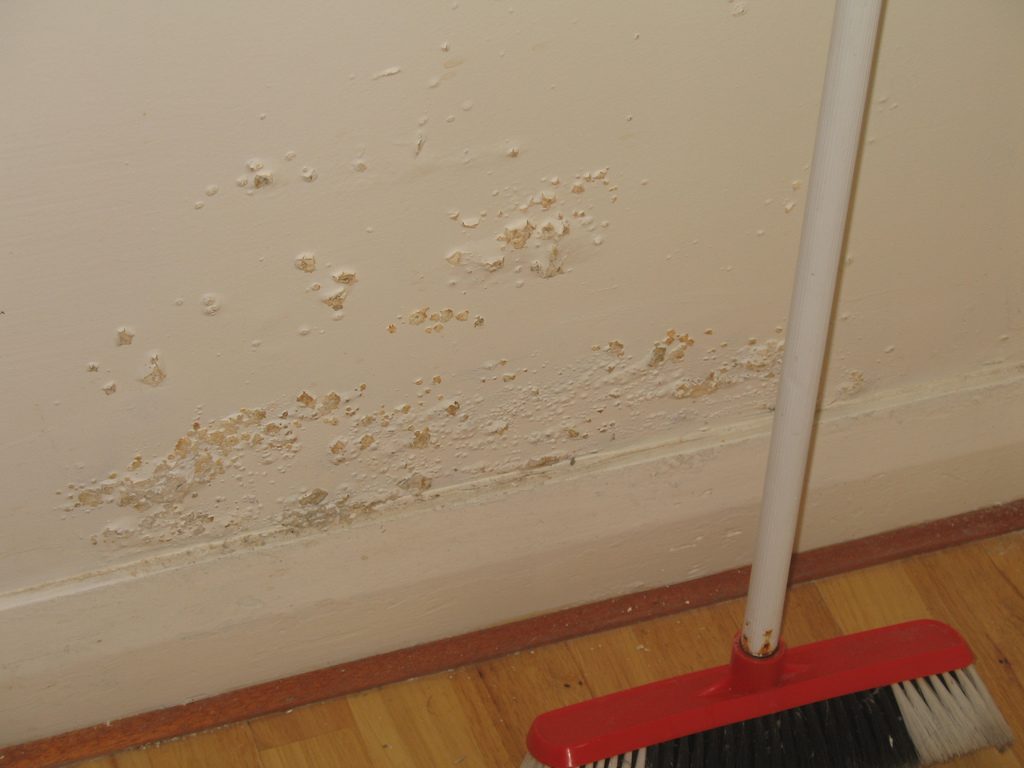Concrete’s porous nature implies that water from underground will feed up through your concrete floor, making it damp. This causes mold and mildew, particularly if you’ve got carpet or furniture placed on the concrete. Basements and garages – the standard rooms with concrete floors – additionally suffer from poor air circulation, allowing the humidity to travel everywhere once it seeps through the ground. Sealing your concrete floor will eliminate the dampness on your floor.
Check for dampness
Before you seal your floor, verify how damp it is. Tape some plastic (in the form of a square) on the floor by using painter’s tape. Following 24 hours, check the plastic to examine if water has condensed beneath it. If so, your floor is too damp to seal – most sealants should be applied to a dry floor. Clean and dry your floor before waterproofing it.
Clean the floor
Before drying your floor, clean it well to get rid of dirt and any settled mildew. Vacuum or sweep it completely, then scrub it with a mop. Use 1 part bleach to 4 parts water to scrub the ground. The bleach has the additional benefit of killing mold and mildew which may have accumulated on the ground. Pay special attention to the corners, wherever insects and mildew tend to stay. For deep cleaning, you can rent a rotary floor scrubber with an abrasive pad designed for cleaning of concrete. You will use it to apply trisodium phosphate, or TSP, to the ground. Rinse the ground completely, then use a wet-dry vacuum to get rid of the water.

Dry
the floor
Get your floor very dry before waterproofing it.
You should wait for days when it is not rainy and also when the
humidity isn’t too high. A dehumidifier will facilitate drawing out
humidity or a floor fan will facilitate the airflow and speed
evaporation of the dampness. Continue drying the ground till your
dampness test with the plastic stays dry all night long.
Seal
the floor
Most sealers stay clear, which render their
application tricky, as even coverage is essential to preventing
future dampness in your concrete floor. It is best to paint all the
small areas at a time to make sure of complete coverage with a thin
layer of sealer; an excessive amount of sealer will cause bubbles
because it dries. Use a sealer designed for concrete moisture
protection, like epoxy concrete sealers, which regularly comes in 2
components that have to be mixed at once before applying. Pay
attention to the corners and edges of the floor, wherever cracks will
let further moisture feed in. Though some sealers are applied with a
paint sprayer, many floor sealers are best applied with a typical
roller. Properly cover a tiny space with a skinny layer of sealer,
then move on to another area. Try this till the whole floor is
finished; sealers work best in a single solid layer and not when you
spread a layer over the same layer for more than one day. Let the
sealer dry for 24 hours, then apply a thin coat if needed. Two-part
epoxy formula needs to be used of a freshly mixed batch for every
coat. After drying for one additional day, the ground is now ready
for the installation of a new carpet or paint with no more dampness.



1 thought on “How to Seal a Humid Concrete Floor?”